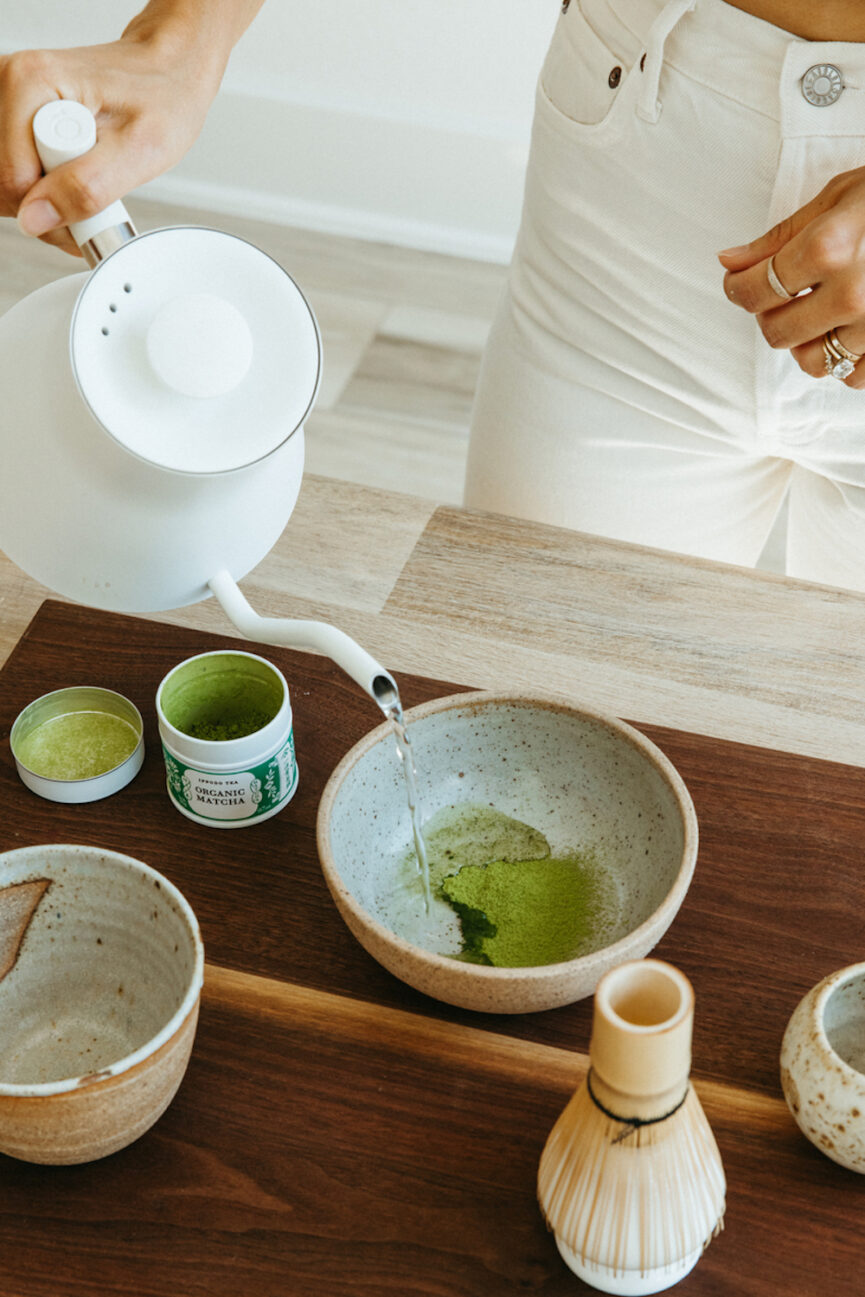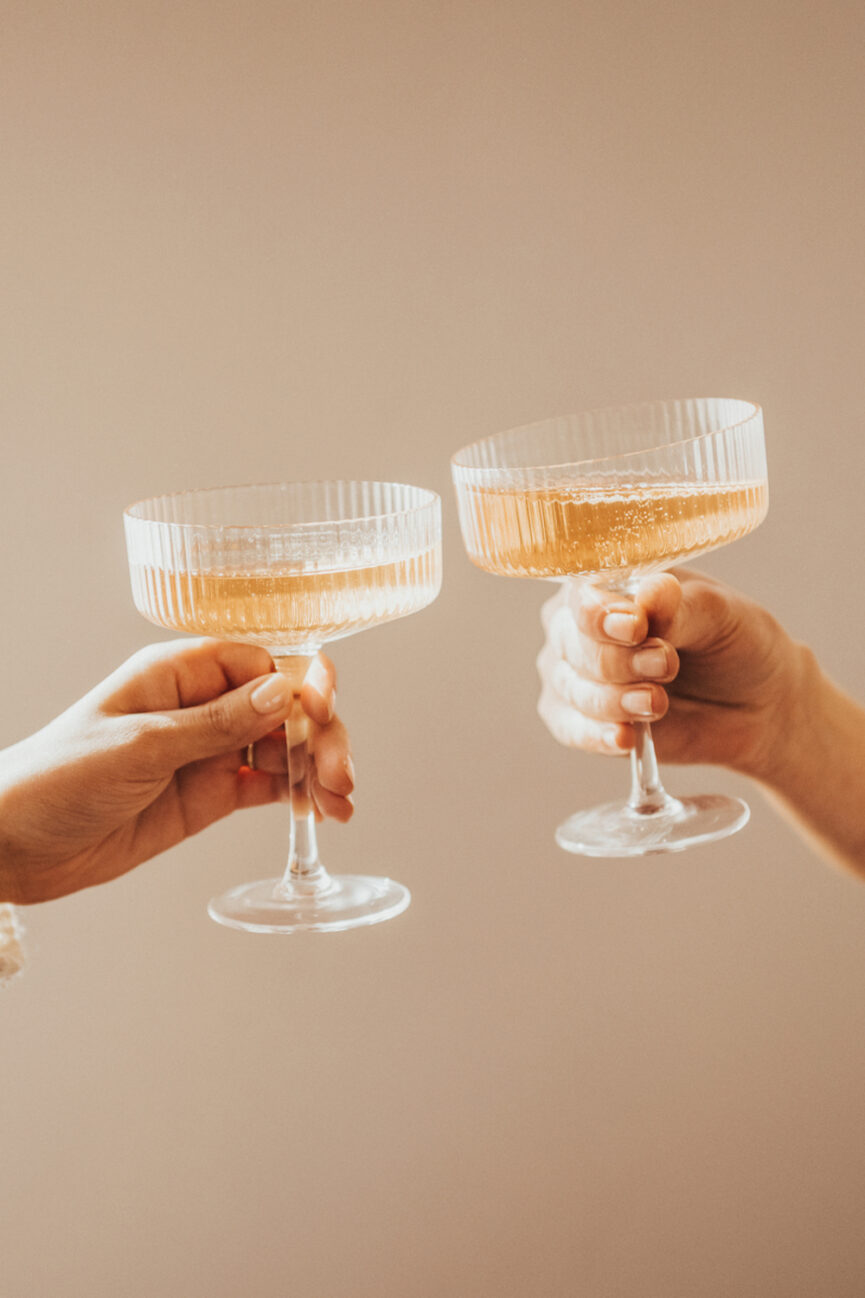I have a love-hate relationship with the New Year’s wellness frenzy. On the one hand, I love any excuse to lean deeper into the habits and routines that help me feel my best. But on the other, in our all-or-nothing culture, following weeks of parties, drinks, and our favorite indulgent foods, I’m overwhelmed by the shift to restriction. What’s more, I often find that many people make January resolutions with little intention or forethought—instead latching on to whatever’s trending. (75 Hard and 10K daily steps, I see you.) And while I once thought that Dry January was an unnecessarily tortuous, month-long challenge, any break from alcohol can help you become a more aligned and authentic version of yourself.
As I’ve been reflecting on and reconsidering my relationship with alcohol, this year’s Dry January came as an opportunity to explore sober curiosity further. Several weeks in, not only do I physically feel better—those “mysterious” headaches have disappeared—but I see myself transforming into a more confident and carefree woman. One who trusts in her ability to have fun entirely sober. With those results as proof, I’m convinced that Dry January is a month for all of us to practice embodying our highest selves. Doesn’t that sound like a good way to kick off 2024?
Editor’s note: This article is not intended to treat alcohol addiction. If you are struggling with substance abuse, consult with your medical provider or call the SAMHSA National Helpline at 1-800-662-4357 for support.
Dry January Tips to Make 2024 Your Healthiest Year Yet
Recent post-Covid years have seen a significant uptick in Dry January participants. Last year, 35% of consumers took part, up from 21% in 2019. Interestingly, 74% of Dry January participants reported succeeding in the challenge, compared to the 8-10% who saw their resolutions through.
But while many aim to take on the month without alcohol, anecdotally, I’ve observed people doing so without support or resources. Oftentimes, what this achieves is little beyond abstaining for the month, only to revert to old habits come February.
And sure, while some take on Dry January intending to maintain abstinence, most want to cultivate a more intentional relationship with alcohol. So how do you make that happen? By taking a more mindful approach.
This is everything you need—from affirmations to supportive mental and physical practices to books to yes, zero-ABV drinking alternatives—to help level up your Dry January. Who knows, it must just change how you approach everything.

Dry January Benefits
I connected with Marcus Sakey, co-founder of Ritual Zero Proof, to discuss why Dry January is a growing trend, particularly among younger consumers. Many approach it as a reset, he notes, “for both mental and physical health.” A hard reset at that. Post-holidays—a celebratory time of year—many swing to the opposite end of the spectrum, cutting out any and all indulgences. But as Sakey observes, Dry January is also an opportunity to explore a lifestyle of moderation.
While the timeline may vary depending on how much and how regularly you’re currently drinking, abstaining from alcohol may lead to the following benefits.
Better sleep. Sure, that glass of red wine might help you doze off, but it can disrupt sleep later on, leading to an overall lower-quality snooze. By taking a break from alcohol, you’ll sleep more soundly and wake up feeling better rested.
Brighter skin. The skin is the body’s largest organ, and what’s on the outside indeed reflects what’s within. Case in point: the relationship between alcohol and your complexion. Because alcohol is known to accelerate facial aging and increase the risk of rosacea, Dry January could also support your 2024 skin goals.
More energy and mental clarity. Goodbye, brain fog, and hello to a headache-free year. Alcohol is dehydrating and can cause your blood sugar levels to fall, leading to feelings of weakness and fatigue.
Improved sex life. While many of our dating lives may involve going out for drinks or we’re quick to cite the 2009 study that named red wine an aphrodisiac, alcohol consumption can impair sexual function in both men and women.

Dry January Tips
Of course, for anyone who’s experienced the majority of their adult life socializing around alcohol, abstaining from it can pose a slew of challenges. It can be hard to know how to connect with others or even go out to dinner when a glass of wine sounds so good. But with a few simple Dry January tips up your sleeve, you can navigate these difficulties with ease. Not only that, but you may discover that you appreciate these moments of connection all the more.
Simple Ways to Get the Most From Your Dry January
Identify a support person. When we undergo something new, it’s important to have someone we trust and can lean on in our corner. This person doesn’t necessarily have to be doing Dry January, but it can be helpful for them to understand the specific challenges you’re facing.
Connect with like-minded communities. The beautiful thing about Dry January is that it’s an international movement—and you’ll find plenty of local or virtual communities to join. Visit Meetup to see what sober-curious groups are gathering in your area.
Explore zero-ABV options. If you still crave your signature drink, opt for a tasty non-alcoholic alternative. Ritual Zero-Proof, Non, Apothékary, and Figlia are all great options. Explore even more of our favorites.
Pour into your hobbies. With fewer weekend bar hops and Saturday mornings spent recovering from the previous evening’s festivities, you’ll find that you have more time to explore the activities that bring you joy and energy. At a loss for ideas? Here’s how to find a hobby.
Look at Dry January as an exciting challenge. One that’s “full of possibility,” Sakey says. Making significant behavioral changes inevitably opens us up to new ways of living and spending our time. Sakey encourages having fun with spirit alternatives and finding your new go-to mocktail. Be mindful of how you’re benefiting from this choice—mind and body—and be present for the ways in which it’ll positively impact your life moving forward.









